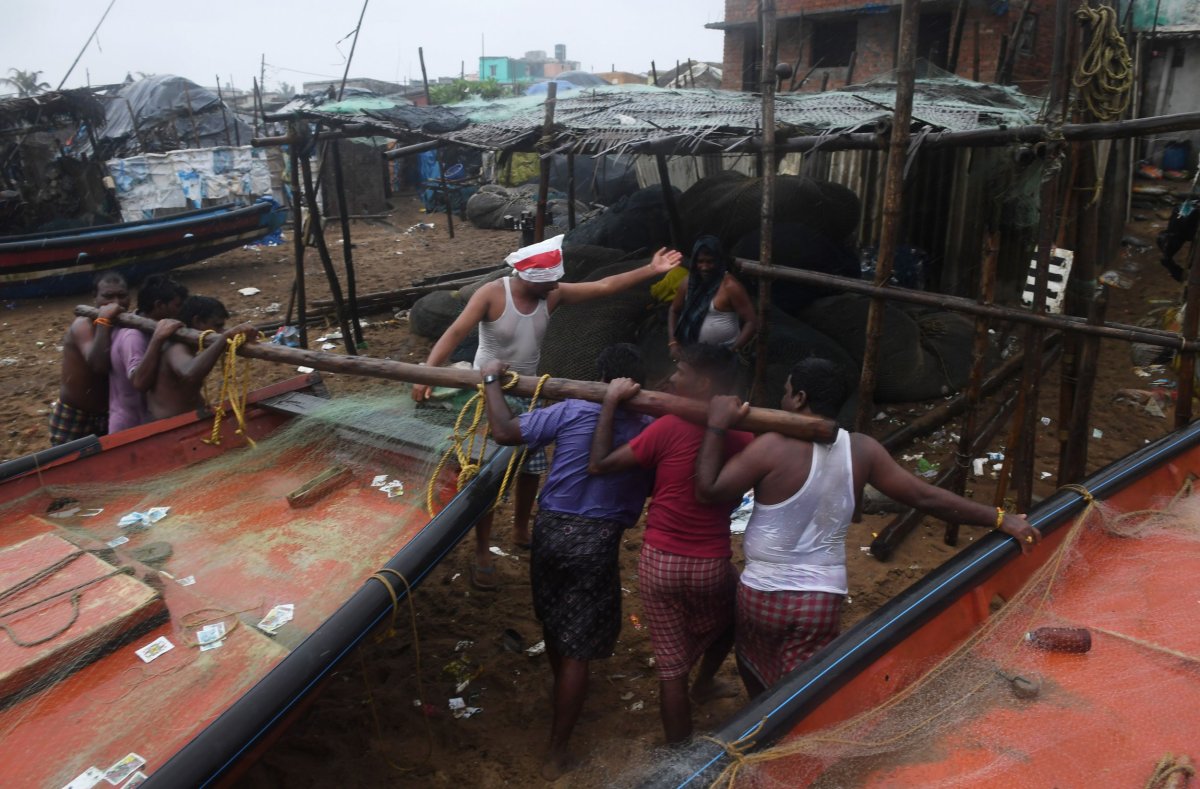India is bracing for the impact of Cyclone Fani, a huge tropical storm bearing down upon the country's east coast that is expected to make landfall on Friday morning.
Hundreds of thousands of people have been ordered to evacuate villages along the Bay of Bengal coastline as authorities prepare for damage from the storm.
The latest storm trackers suggest the storm will move into Odisha state sometime on Friday, hitting close to the city of Puri. Wind speeds are currently in excess of 127 mph, the BBC reported.
According to AccuWeather, Fani is currently classified as an "extremely severe cyclonic storm," with winds equal to a Category 4 hurricane in the Atlantic or eastern Pacific. Upon landfall, sustained winds are expected to be as high as 100 mph with gusts of 120 mph, the India Meteorological Department warned.
Less than 24 hours from landfall, #Tropical #CycloneFani intensifies to a Category 4. All preparations should be rushed to completion in eastern #India states of #Odisha and West Bengal. https://t.co/4sddJmdhwj pic.twitter.com/woGerjYsVv
— The Weather Channel (@weatherchannel) May 2, 2019
Local officials told the BBC more than 800,000 people are being evacuated, about 100,000 of whom are fleeing Puri, where Fani's impact is expected to be most significant. More than 100 million people are believed to be in the path of the cyclone, AccuWeather said, which is expected to bring heavy rain, strong winds and storm surges in low-lying areas.
All schools and universities in Odisha state have been closed, while the state's Paradip port and the Visakhapatnam port in Andhra Pradesh have ceased operations. Ships operating there have been ordered to move out to sea to avoid the worst of the cyclone, NDTV noted.
Andhra Pradesh and Tamil Nadu states—both south of Odisha—have also been placed on high alert. Odisha and Andhra Pradesh are expected to get as much as 8 inches of rain as the storm passes north up the east coast, continuing into Bangladesh and Bhutan. Four other Indian states—West Bengal, Arunachal Pradesh, Assam and Meghalaya—could also be affected.
Naveen Patnaik, chief minister of Odisha, said his state was "fully prepared to tackle the cyclone" but appealed to "the children, women, old and disabled" to be the first to evacuate. Indian Prime Minister Narendra Modi tweeted that the central government is "ready to provide all possible assistance that would be required." He also offered "prayers for the safety and well-being of our citizens."
#Cyclone #Fani has intensified and how has maximum winds of 105 mph - the strongest cyclone this early in the calendar year in the North Indian Ocean since Cyclone Nargis in 2008. pic.twitter.com/yW9hspzumi
— Philip Klotzbach (@philklotzbach) April 30, 2019
Odisha's special relief commissioner, Bishnupada Sethi, said 850 storm shelters had been opened along the state's east coast, The New York Times said. Each can hold around 1,000 people and their livestock. However, the commissioner noted that "people are reluctant to leave their homes, though, which is problematic."
The state has been preparing for the cyclone's impact since Saturday, when new forecasts clarified its possible path. Fani could be the most powerful storm to hit the Indian coast since Cyclone Phailin in 2013, when around 1 million people were evacuated and 45 killed. However, the state had much more time to prepare for Phailin than for Fani, the Times noted.

Uncommon Knowledge
Newsweek is committed to challenging conventional wisdom and finding connections in the search for common ground.
Newsweek is committed to challenging conventional wisdom and finding connections in the search for common ground.
About the writer
David Brennan is Newsweek's Diplomatic Correspondent covering world politics and conflicts from London with a focus on NATO, the European ... Read more
To read how Newsweek uses AI as a newsroom tool, Click here.








